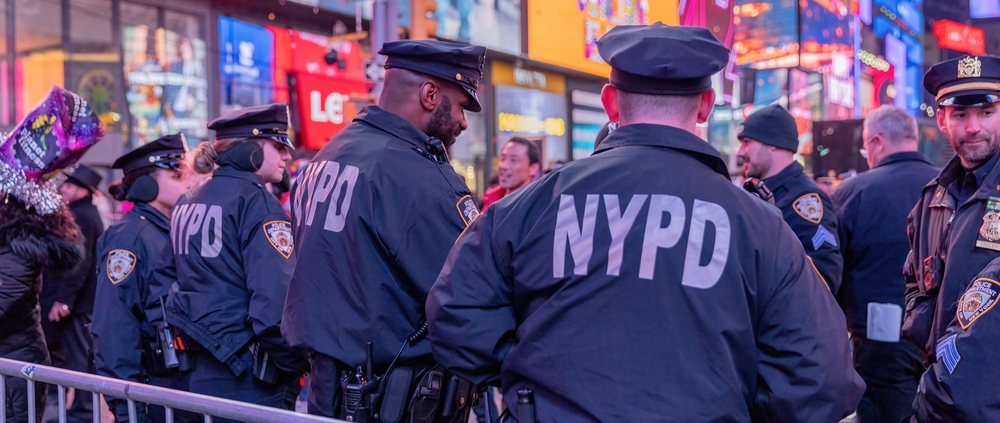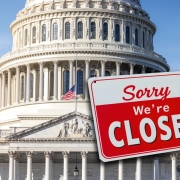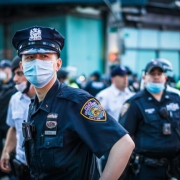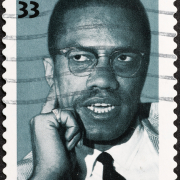Examining the NYPD’s Controversial “48-Hour Rule”: Balancing Officer Rights and Accountability
By Esther Claudette Gittens | Editorial Credit: Ben Von Klemperer /shutterstock.com
One policy that has garnered significant attention is the NYPD’s “48-hour rule,” which grants officers a 48-hour window before they must answer questions about incidents involving potential misconduct.
The New York Police Department (NYPD) has long been at the center of debates regarding police accountability, transparency, and misconduct. One policy that has garnered significant attention is the NYPD’s “48-hour rule,” which grants officers a 48-hour window before they must answer questions about incidents involving potential misconduct. This rule, defended by police unions but criticized by many civil rights advocates, has shaped the landscape of police accountability in New York City. This analysis aims to provide a comprehensive overview of the history, current status, and implications of the 48-hour rule, along with statistical trends in police misconduct during the de Blasio and Adams administrations. The conclusion will argue for the elimination of the rule based on the findings. Read more at www.askthelawyer.us.To read the complete analysis in our publication, click here, and on our civil rights blog, click here.
Section 2: History of the NYPD 48-Hour Rule
The NYPD’s 48-hour rule has been a subject of contentious debate since its inception, deeply rooted in the history of labor relations between the city and its police unions. To fully understand its origins and implications, it’s essential to delve into the broader context of police practices, union negotiations, and evolving public attitudes towards law enforcement.
2.1 Origins and Early Justifications
The 48-hour rule can be traced back to the 1960s and 1970s, a period marked by significant social upheaval, rising crime rates, and growing tensions between law enforcement and the communities they served. During this time, police unions like the Patrolmen’s Benevolent Association (PBA) sought to protect their members from what they perceived as unfair scrutiny and politically motivated investigations. The unions argued that officers involved in high-stress incidents, such as shootings or in-custody deaths, should be given a “cooling-off period” to consult with legal counsel and collect their thoughts before facing questioning by Internal Affairs or external oversight bodies.
The early justification for the rule was primarily framed around the concept of due process—an officer’s right to fair treatment in the investigative process. Police unions emphasized that officers often face life-or-death decisions in the line of duty, and immediate questioning could lead to inaccurate or coerced statements. By providing a 48-hour window, unions argued, the process would be more just and less prone to errors that could arise from stress or emotional turmoil.
2.2 Evolution Over the Decades
Over the subsequent decades, the 48-hour rule became entrenched in NYPD policy through collective bargaining agreements, making it difficult to amend or abolish without significant pushback from unions. The 1980s and 1990s saw the rise of “tough on crime” policies, with an emphasis on aggressive policing strategies like “stop-and-frisk.” During this period, the NYPD gained a reputation for both reducing crime rates and engaging in controversial tactics that often led to allegations of civil rights violations.
As complaints of police misconduct rose, so did public awareness and criticism of the 48-hour rule. Notably, cases such as the 1999 shooting of Amadou Diallo, an unarmed African immigrant, by four NYPD officers highlighted the potential for abuse and the perception that officers could use the 48-hour window to coordinate their stories. Despite public outcry and calls for reform, the police unions successfully defended the rule, citing the need for procedural fairness.
2.3 Legal and Policy Perspectives
Legally, the 48-hour rule is protected by labor law and collective bargaining agreements, making it a challenging policy to dismantle. Efforts to reform or eliminate the rule have often stalled in the face of strong opposition from police unions. Several attempts have been made to challenge the rule in court, arguing that it obstructs justice and impedes swift and effective investigations into police misconduct. However, these challenges have faced significant legal hurdles, as courts have generally deferred to the terms negotiated in labor contracts.
From a policy perspective, critics argue that the 48-hour rule creates a dual system of justice—one for civilians and another for police officers. This sentiment has fueled a broader movement advocating for police reform, emphasizing the need for greater transparency, accountability, and community trust.
2.4 Key Moments in the Rule’s History
- 1999 Amadou Diallo Case: The shooting of Diallo, who was unarmed, by four NYPD officers sparked national outrage. The officers were acquitted of all charges, but the incident intensified calls for reform, including changes to the 48-hour rule.
- 2006 Sean Bell Case: Bell was shot by NYPD officers in a barrage of 50 bullets on the eve of his wedding. The officers involved were granted the 48-hour window, further inflaming public opinion against the rule.
- 2014 Eric Garner Case: Garner’s death, captured on video as he repeatedly said “I can’t breathe” while being placed in a chokehold by an NYPD officer, became a catalyst for the Black Lives Matter movement. The 48-hour rule was again criticized for delaying accountability.
These cases represent critical flashpoints in the history of the NYPD 48-hour rule, underscoring its controversial nature and the growing demands for its elimination.
Section 3: Current Status of the 48-Hour Rule
The 48-hour rule remains a significant point of contention in New York City, particularly in the wake of ongoing police reform efforts. To understand its current status, we must examine recent legislative and policy developments, as well as the perspectives of various stakeholders.
3.1 Application in Contemporary Policing
Today, the 48-hour rule is still embedded in the operational procedures of the NYPD. It is invoked in cases involving shootings, serious use-of-force incidents, and other situations where an officer’s actions may be called into question. The rule applies not only to high-profile cases but also to less-publicized incidents that may not reach the media but have significant implications for police accountability.
Despite its continued use, the rule has faced increasing scrutiny from civil rights advocates, community leaders, and some city officials. They argue that the 48-hour delay can impede justice by allowing officers time to potentially collude or align their narratives, ultimately complicating the investigative process.
3.2 Recent Debates and Legislative Attempts
In recent years, there have been several legislative efforts aimed at either reforming or outright abolishing the 48-hour rule. For example:
- City Council Proposals: Various members of the New York City Council have introduced bills to modify or eliminate the rule. These proposals often focus on aligning police accountability standards with those applied to civilians, emphasizing the need for immediate and untainted testimony in cases of alleged misconduct.
- State-Level Interventions: Some state legislators have also called for statewide reforms to police practices, including addressing policies like the 48-hour rule that are seen as barriers to accountability.
- Public Advocate Reports: The New York City Public Advocate has released several reports highlighting the adverse effects of the 48-hour rule on police accountability and community trust, advocating for its removal.
Despite these efforts, significant progress has been stymied by the powerful influence of police unions, which have argued that the rule is a non-negotiable right that protects officers from potential abuses in the disciplinary process.
3.3 Stakeholder Reactions
The debate over the 48-hour rule has elicited strong reactions from various stakeholders:
- Police Unions: Unions like the Patrolmen’s Benevolent Association (PBA) and the Sergeants Benevolent Association (SBA) staunchly defend the rule, framing it as a fundamental right that safeguards officers from hasty or politically motivated investigations.
- Civil Rights Organizations: Groups such as the American Civil Liberties Union (ACLU), the Legal Aid Society, and the New York Civil Liberties Union (NYCLU) argue that the rule undermines justice and accountability, advocating for its elimination as part of broader police reform efforts.
- City Officials: While some city officials have expressed support for reforming or eliminating the rule, others have been more cautious, balancing the need for accountability with concerns about public safety and police morale.
3.4 Public Sentiment
Public sentiment regarding the 48-hour rule is largely negative, particularly among communities that have historically experienced over-policing and discrimination. Polls and community feedback consistently show a desire for greater accountability measures and skepticism towards policies perceived as shielding officers from the consequences of their actions. The 48-hour rule, in particular, is often cited as a symbol of systemic inequities in the criminal justice system.
Section 4: Statistical Trends in Police Misconduct During de Blasio and Adams Administrations
To comprehensively analyze the impact of the 48-hour rule and broader trends in police misconduct, it is crucial to examine the available data from the administrations of Bill de Blasio (2014–2021) and Eric Adams (2022–present). This section provides a detailed exploration of the statistical trends, highlighting key findings and patterns.
4.1 Data on Police Misconduct Incidents
Under the de Blasio administration, there was an increased focus on transparency and accountability following several high-profile incidents of police misconduct. The Civilian Complaint Review Board (CCRB) and the NYPD’s Internal Affairs Bureau (IAB) collected extensive data on complaints and investigations:
- Complaints Received: Between 2014 and 2021, the CCRB received thousands of complaints each year. For example, in 2015, there were 4,460 complaints, and in 2019, there were 4,832 complaints. These figures represent a persistent level of public dissatisfaction with police conduct.
- Types of Misconduct: Complaints ranged from abuse of authority, discourtesy, and offensive language to more severe allegations such as excessive force, sexual misconduct, and corruption. Use of excessive force consistently accounted for a significant proportion of complaints.
- Outcomes of Investigations: The outcomes of CCRB investigations varied, with a considerable percentage of cases resulting in “unsubstantiated” findings due to insufficient evidence. However, when misconduct was substantiated, the recommended penalties often did not align with the actual disciplinary outcomes decided by the NYPD.
Under the Adams administration, preliminary data indicates that police misconduct complaints have continued, though it is still early to draw comprehensive conclusions about broader trends. The data collected will need further analysis over time to assess the impact of any policy changes or reforms introduced by the Adams administration.
4.2 Trends in Police Crimes
Police crimes, distinct from general misconduct, involve criminal behavior by officers, such as assault, theft, drug trafficking, and abuse of authority. During the de Blasio administration, there were several high-profile cases of police criminality:
- Case Examples: Notable cases included officers involved in drug trafficking rings, illegal gun sales, and other forms of corruption. These cases often resulted in federal or state criminal charges and highlighted systemic issues within certain precincts or units.
- Internal Accountability: The NYPD’s Internal Affairs Bureau was tasked with investigating these crimes, but critics argue that the IAB lacked the independence and resources needed to effectively address the scope of the problem.
4.3 Analysis of Civil Rights Lawsuits Against the NYPD
Civil rights lawsuits represent another critical metric for assessing police misconduct and accountability. During the de Blasio era, the city paid out hundreds of millions of dollars in settlements and judgments stemming from civil rights violations:
- Financial Impact: In 2019 alone, the city paid out nearly $300 million in settlements and judgments in cases against the NYPD. This figure underscores the financial burden on taxpayers and reflects ongoing systemic issues within the department.
- Types of Cases: The lawsuits covered a wide range of issues, including false arrests, malicious prosecution, excessive force, and wrongful death. Many of these cases stemmed from controversial practices such as “stop-and-frisk,” which disproportionately targeted communities of color.
- Trends Under Adams: While data under the Adams administration is still emerging, early indications suggest that civil rights lawsuits remain a significant issue, with ongoing legal challenges and costly settlements continuing to impact the city’s finances.
4.4 Comparison Between de Blasio and Adams Administrations
Comparing the de Blasio and Adams administrations reveals both continuities and changes in the landscape of police misconduct:
- Continuities: Issues such as excessive force, abuse of authority, and civil rights violations persist under both administrations, highlighting the need for more robust oversight and reform measures.
- Changes: The Adams administration has taken a more pro-police stance publicly, emphasizing law and order and supporting officers. However, it remains to be seen whether this approach will translate into meaningful changes in police behavior or accountability.
Section 5: Impact of the 48-Hour Rule on Police Misconduct and Accountability
The 48-hour rule plays a significant role in shaping the outcomes of police misconduct investigations within the NYPD. This section explores how the rule impacts accountability and provides case studies to illustrate its effects.
5.1 Influence on Investigative Processes
The 48-hour rule has several critical implications for the investigative process:
- Delayed Investigations: The 48-hour delay can hinder the timeliness of investigations, allowing officers time to potentially align their stories or consult with legal representatives in ways that may obstruct the fact-finding process.
- Challenges for Internal Affairs: The Internal Affairs Bureau (IAB) and other oversight bodies face challenges in conducting swift and effective investigations when key witnesses (i.e., the officers involved) are not immediately available for questioning.
- Erosion of Evidence: Delays in questioning can lead to a loss of crucial evidence or the fading of memories, complicating the process of establishing a clear narrative of events.
5.2 Case Studies Highlighting the Impact
- Case Study: The Eric Garner Case (2014): The 48-hour rule was a point of contention in the investigation of Eric Garner’s death. The delay in questioning Officer Daniel Pantaleo and others involved was cited as an example of how the rule could obstruct timely justice. The case became a national symbol of police misconduct and the need for reform.
- Case Study: The Sean Bell Case (2006): In the case of Sean Bell, who was fatally shot by NYPD officers in 2006, the 48-hour rule was again invoked, raising concerns about the impartiality and thoroughness of the investigation. Despite the controversy, the officers involved were acquitted, further fueling calls for changes to the rule.
5.3 The Perspective of Civil Rights Lawyers and Watchdog Organizations
Civil rights lawyers and watchdog organizations have consistently argued that the 48-hour rule undermines efforts to hold officers accountable for misconduct. They contend that immediate and unfiltered testimonies are crucial for establishing facts and ensuring justice in cases involving police use of force or other forms of misconduct.
Section 6: Arguments for and Against the 48-Hour Rule
The debate over the 48-hour rule involves deeply entrenched positions on both sides. This section presents the primary arguments for and against the rule.
6.1 Arguments For the Rule
- Protection of Officers’ Rights: Police unions argue that the rule protects officers from potentially hasty or biased investigations. The “cooling-off period” allows officers to secure legal representation and avoid making statements under duress.
- Ensuring Accurate Testimonies: Supporters claim that officers are more likely to provide accurate and reliable testimonies when given time to rest, recover from stressful incidents, and consult with their legal teams.
6.2 Arguments Against the Rule
- Lack of Accountability and Transparency: Critics argue that the rule creates a lack of accountability by delaying critical investigations. Immediate questioning is a standard practice for civilians and should be equally applied to law enforcement officers.
- Potential for Collusion: The rule provides an opportunity for officers to potentially collude or coordinate their stories, which can obstruct justice and undermine public trust.
- Comparative Policies in Other Cities: Many other major U.S. cities, such as Los Angeles and Chicago, have moved away from similar rules, adopting more transparent and immediate investigative procedures without significant issues related to officers’ rights.
Section 7: Conclusion: Why the 48-Hour Rule Should Be Eliminated
Based on the comprehensive analysis of the NYPD 48-hour rule’s history, current status, and its impact on police misconduct and accountability, there is a strong case for its elimination. The rule has consistently been shown to hinder timely and effective investigations, erode public trust, and create a perception of unequal justice. Removing the rule would align NYPD policies with best practices nationwide and enhance community trust in law enforcement.
7.1 Recommendations for Policy Changes
- Immediate Questioning: Adopt policies that require immediate questioning of officers involved in incidents of potential misconduct, similar to protocols followed in other jurisdictions.
- Independent Oversight: Strengthen independent oversight mechanisms, such as the CCRB, to ensure unbiased investigations and accountability.
- Transparency Measures: Increase transparency in the investigation process, including public reporting of disciplinary actions and outcomes.
7.2 Final Thoughts
The elimination of the 48-hour rule is a necessary step towards fostering a culture of accountability within the NYPD. By aligning with best practices and addressing community concerns, New York City can lead the way in creating a more equitable and just law enforcement system.












Leave a Reply
Want to join the discussion?Feel free to contribute!